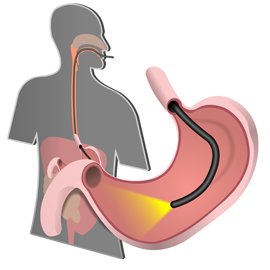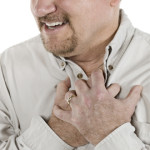
Upper endoscopy is a diagnostic procedure that uses a lighted scope to examine the esophagus, stomach and small intestine. Endoscopy is often used to diagnose gastroesophageal reflux disease (GERD) and determine the extent of damage caused by acid reflux. Dr. Bagnato explains Upper Endoscopy for Acid Reflux Disease as performed at Palmyra Surgical.
When is Endoscopy for Acid Reflux Needed?
If you have been experiencing frequent acid reflux and heartburn, your doctor may be able to diagnose GERD by symptoms alone. However, your doctor may recommend an endoscopy to inspect causes of acid reflux like hiatal hernia and assess the severity of the problem. An endoscopy can also be used to rule out other conditions that may be causing your symptoms.
An endoscopy may be recommended if you experience:
- Acid reflux and heartburn
- Anemia
- Asthma
- Bleeding
- Chronic coughing
- Difficulty swallowing
- Nausea and vomiting
- Unintended weight loss
An endoscopy can also be used to determine if acid reflux has caused medical complications. During an endoscopy, your doctor can look for inflammation and ulcers, and take biopsies to test for conditions like Barrett’s esophagus.
Preparing for Endoscopy for Acid Reflux
You will be asked to refrain from eating and drinking for a period of time before the procedure. This ensures that the upper gastrointestinal tract remains empty to allow for clear inspection. You may also be asked to temporarily stop taking certain medications that may affect blood clotting or interfere with anesthesia.
Because the effects of anesthesia will make you unable to drive for 12 to 24 hours after the procedure, you will need to make plans before your endoscopy to have someone else drive you home.
The Endoscopy Procedure
Anesthesia will be administered to keep you sedated and comfortable during the procedure. You will lie on your side as the endoscope is slowly passed down your esophagus and into your stomach and small intestine. The endoscope is a long, flexible tube with a camera that allows your doctor to view the procedure on a video monitor.
To make it easier for your doctor to see, a small amount of air will be pumped through the endoscope to inflate the stomach and the upper part of the small intestine. In addition to visual examination, your doctor can use special tools to take tissue samples and stop bleeding during the procedure.
An endoscopy typically takes between five and 20 minutes.
Recovering from Endoscopy
After the endoscopy, you will be taken to a recovery room to wait for the effects of the anesthesia to wear off. Because of the medications used, you will likely not remember the procedure. You may also feel very tired and will need to relax for the rest of the day.
You may experience bloating, nausea and sore throat after the procedure. If you experience rare symptoms like vomiting, difficulty swallowing, dark stools, fever or worsening pain in your throat, chest or abdomen, it is important to call your doctor immediately.
Your doctor may be able to discuss some results of the endoscopy with you once the anesthesia has worn off. If a biopsy is taken, these results may be available in a few days.



